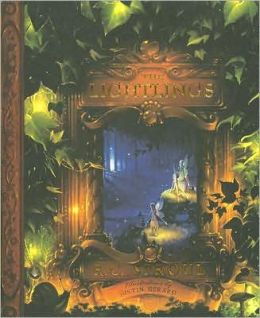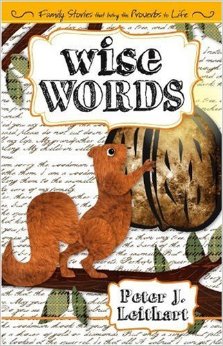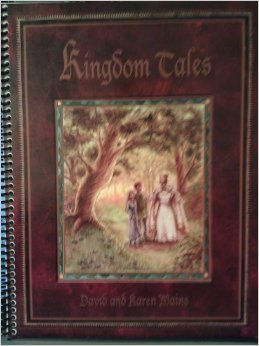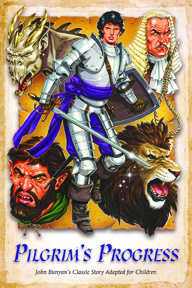“…God, help me to be repentant. And help me to cross the river to the Celestial City. Amen.”
My youngest prayed this prayer after we finished reading the famed allegory, Pilgrim’s Progress: John Bunyan’s Classic Story Adapted for Children![]() . Next to the Bible, it has sold the most copies of books since it’s publishing in the seventeenth century. Pilgrim’s Progress is an allegory, or a symbolic narrative, about the Christian life. If you are not familiar with the story, Pilgrim’s Progress is about a man named Christian who goes on a journey to the Celestial City. Leaving the City of Destruction behind, he must stay on the narrow path and along the way he is tempted, wanders off the path, meets fellow travelers and even gets captured by a giant named Despair. Each step of the story symbolizes the journey we as Christians take in this life of faith.
. Next to the Bible, it has sold the most copies of books since it’s publishing in the seventeenth century. Pilgrim’s Progress is an allegory, or a symbolic narrative, about the Christian life. If you are not familiar with the story, Pilgrim’s Progress is about a man named Christian who goes on a journey to the Celestial City. Leaving the City of Destruction behind, he must stay on the narrow path and along the way he is tempted, wanders off the path, meets fellow travelers and even gets captured by a giant named Despair. Each step of the story symbolizes the journey we as Christians take in this life of faith.
Allegories are useful and helpful ways to share the truth of God’s word with children. After all, even in Scripture, God communicates to us in words and concepts that we understand. Jesus taught the disciples through parables and word pictures. The Bible uses the example of marriage to explain our relationship with God. Agrarian relates stories abound through the Bible. Jesus is compared to a vine and a shepherd. Christians are related to sheep and land stewards. Even Nathan used a symbolic story to point out David’s sin to him in 2 Samuel 12. The book of Proverbs uses analogies and word pictures to explain the way of wisdom. Whenever possible, the inspired writer’s of Scripture used examples from everyday life to help explain spiritual concepts.
As parents, we can use allegories and symbolic stories to explain spiritual truths to our children. We can make up our own stories and use them during teaching moments or in discipline. I’ve done something similar to what Nathan did with David with my own children. We could also encourage our children to think of their own symbolic stories to explain a spiritual truth they have learned. There are also many wonderful allegories already written for children. Aside from Pilgrim’s Progress, The Chronicles of Narnia are the most well-known example. We can’t help but think of Jesus when Aslan takes Edmund’s place, accepting the punishment he deserved.
Below, I have listed some of our favorite allegorical books:
Pilgrim’s Progress: John Bunyan’s Classic Story Adapted for Children![]()


Wise Words: Family Stories That Bring the Proverbs to Life![]()


The Chronicles of Narnia Box Set: Full-Color Collector’s Edition![]()
Have you taught your children spiritual truths using your own parables, allegories, or analogies? Do you and your children have a favorite allegorical book?




























Thanks for a great list, Christina! Can’t wait to get into some of these. I just started Chronicles of Narnia with my son. What age do you think is good for Pilgrim’s Progress?
I just read Pilgrim’s Progress with my 6 yr old. It’s a child’s version, but very well done.